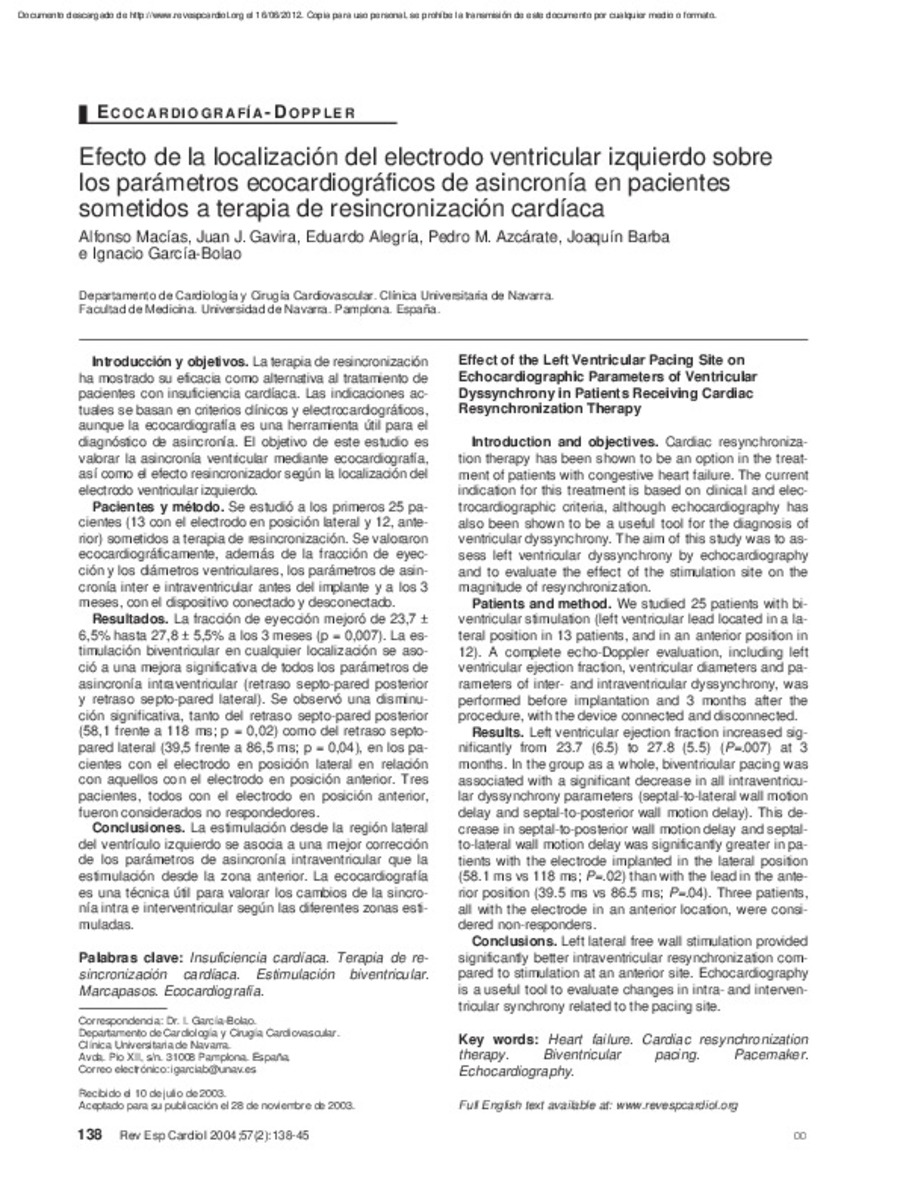Efecto de la localización del electrodo ventricular izquierdo sobre los parámetros ecocardiográficos de asincronía en pacientes sometidos a terapia de resincronización cardíaca
Other Titles:
Effect of the Left Ventricular Pacing Site on Echocardiographic Parameters of Ventricular Dyssynchrony in Patients Receiving Cardiac Resynchronization Therapy
Keywords:
Heart failure
Pacemaker
Echocardiography
Publisher:
Elsevier España
Citation:
Macias A, Gavira JJ, Alegria E, Azcarate PM, Barba J, Garcia-Bolao I. Efecto de la localización del electrodo ventricular izquierdo sobre los parámetros ecocardiográficos de asincronía en pacientes sometidos a terapia de resincronización cardíaca. Rev Esp Cardiol 2004 Feb;57(2):138-145.
Statistics and impact
0 citas en

0 citas en

Items in Dadun are protected by copyright, with all rights reserved, unless otherwise indicated.








